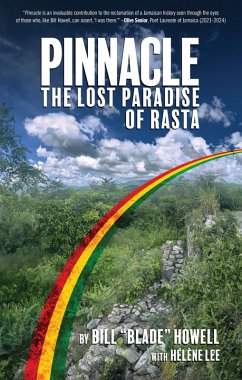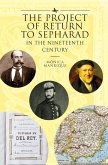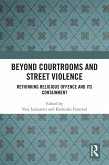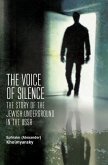A fascinating first-person origin story of the Rastafari ideology, culture, and philosophy, capturing a crucial and little-known chapter in Jamaican history
IN 1932, A JAMAICAN MAN NAMED LEONARD PERCIVAL HOWELL began leading nonviolent protests in Kingston, Jamaica, against British colonial rule. While history books rightly credit Mahatma Gandhi and Martin Luther King Jr. with popularizing nonviolent protest strategies in later years, little is known about Leonard Howell and his vision of self-reliancepoor people working together to build a society of their own. When Howell first started preaching on street corners in Kingston, he was immediately perceived as "seditious," and he became a target for police harassment. Howell soon founded an organization called the Ethiopian Salvation Society. His idea was to add a religious element to Marcus Garvey's message of African independence. Although Christian values were part of his belief system, he decided to make a break from the Christian interpretation of the Bible and extend the idea of divinity to a living man, Emperor Haile Selassie I, who had been crowned king of Ethiopia in 1930.
Jamaican journalists coined a name for the group: the "Ras Tafarites," or "Rastas." Howell was arrested several times and was eventually found guilty of sedition and sentenced to prison for two years of hard labor. In 1940, Howell and his growing group of followers moved to an old estate in the parish of St. Catherine. They named their land Pinnacle, and for the next sixteen years built a self-reliant community that would ultimately give birth to the Rastafari movement.
In 1942, Leonard Howell's wife Tenneth gave birth to their second child, who they named Bill. In Pinnacle: The Lost Paradise of Rasta, Bill "Blade" Howell offers his firsthand account of this utopian community that suffered near-constant persecution from Jamaican authorities. Howell also dispels many misguided notions about the origins of Rastafari culture, including allegations of sexism and homophobia. Pinnacle was built on egalitarian principles, and steered clear of all religious dogma.
Pinnacle: The Lost Paradise of Rasta provides a crucial and highly informed new perspective on the Rastafari subculture that Bob Marley would later help to spread across the globe. The volume includes photographs and original documents related to Pinnacle.
IN 1932, A JAMAICAN MAN NAMED LEONARD PERCIVAL HOWELL began leading nonviolent protests in Kingston, Jamaica, against British colonial rule. While history books rightly credit Mahatma Gandhi and Martin Luther King Jr. with popularizing nonviolent protest strategies in later years, little is known about Leonard Howell and his vision of self-reliancepoor people working together to build a society of their own. When Howell first started preaching on street corners in Kingston, he was immediately perceived as "seditious," and he became a target for police harassment. Howell soon founded an organization called the Ethiopian Salvation Society. His idea was to add a religious element to Marcus Garvey's message of African independence. Although Christian values were part of his belief system, he decided to make a break from the Christian interpretation of the Bible and extend the idea of divinity to a living man, Emperor Haile Selassie I, who had been crowned king of Ethiopia in 1930.
Jamaican journalists coined a name for the group: the "Ras Tafarites," or "Rastas." Howell was arrested several times and was eventually found guilty of sedition and sentenced to prison for two years of hard labor. In 1940, Howell and his growing group of followers moved to an old estate in the parish of St. Catherine. They named their land Pinnacle, and for the next sixteen years built a self-reliant community that would ultimately give birth to the Rastafari movement.
In 1942, Leonard Howell's wife Tenneth gave birth to their second child, who they named Bill. In Pinnacle: The Lost Paradise of Rasta, Bill "Blade" Howell offers his firsthand account of this utopian community that suffered near-constant persecution from Jamaican authorities. Howell also dispels many misguided notions about the origins of Rastafari culture, including allegations of sexism and homophobia. Pinnacle was built on egalitarian principles, and steered clear of all religious dogma.
Pinnacle: The Lost Paradise of Rasta provides a crucial and highly informed new perspective on the Rastafari subculture that Bob Marley would later help to spread across the globe. The volume includes photographs and original documents related to Pinnacle.
Dieser Download kann aus rechtlichen Gründen nur mit Rechnungsadresse in A, D ausgeliefert werden.









